Communities planning for success

Mayors message here.
Moluptiorio te rest fuga. Et quas num, coneceatem facest, into tem que nonseri tintusa nimaxim evel mod qui ne nonsecaes as sed magniatemo odit vollaut officati raerum dolores tincipis quo diae volores illatur sinveni enient.
Il explibus eosant que nimendit ex expernatet volupta tentis et pelia sum aut ex etur a simagniet od molut quam facculla cusdame ndipsam endam, consent utenis nulparia volore nos quas m sed magniatemo odit vollaut officati raerum dolores tincipis quo diae volores illatur sinveni enient.
Il explibus eosant que nimendit ex expernatet volupta tentis et pelia sum aut ex etur a simagniet od molut quam facculla cusdame ndipsam endam, consent utenis nulpariaast ut hitae placepe rnatios sernam secumquia diam aut incieni moluptas nobisci liatiis assimpediam,
Lawrence Yule Mayor, Hastings District Council

Contents Why a community-led plan? 2 Super successes 4 What is the community’s commitment? 5 What is Council’s commitment? 6 Community plans so far 7 How did all this come about - the history 8 In a nutshell 9 Hastings District Council // 1
Why a community-led plan?
The people who make up your community know the strengths, needs and issues in your suburb –so who better to put together a plan for the future of your own backyard?
That plan might be around infrastructure - say playgrounds or a community garden; around aspirations - more youth in work or achieving better in education; connectedness - people knowing and helping each other; planning - things like zoning or the rehabilitation of waterways; or safetybetter access to school entrances or protection for cyclists.
There really are no limits to what can be in your plan (rocket ships excluded) – as the nine already up and running across the district attest to. All of the examples given above have been in real plans belonging to Hastings residents. They have been in response to particular needs and the solutions achieved. That’s not bad going, and there are plenty more examples.

2 // Hastings District Council
YOU MIGHT ASK: WHY IS COUNCIL NOT DOING THIS?
Well we are, but in a different way; with communities rather than for communities. The traditional Council approach has been used over millennia, but in the end, as we have now proved, community plans are much more relevant and successful if the people living in a place get together and decide what they need, and then get involved in achieving the goals. Often, not only do they achieve the physical goal they have set, but the process of coming together to decide on what is important helps develop meaningful relationships within the community. Many projects involve getting together to achieve an aim, rather than individuals working alone. Examples include replanting a river bank or running a working bee to clean up a neglected area. People working together, chatting, sharing a meal after a day’s effort, not only end up being more involved in their communities, but collectively build up ideas for future additions to the plan that unites them.
Of course there is also the issue of numbers – many heads are better than a few. In the end Council is a relatively small body of people spread over many fields. Waiting for Council to come up with a plan, find the funding, and do the work for every suburb might take a very long time. And then, without the inside knowledge of the whole community, could end up providing the wrong answer.
There are also some big opportunities that communities can make the most of; opportunities not always available to councils. Having robust, successful plans gives communities some ammunition to use to apply for external funding. In Flaxmere, the community plan has enabled the committee to apply for funding to help pay for its drivers licence programme, and in Whakatu the community has successfully applied for funding to implement a section of its plan due to the robustness of its plan.
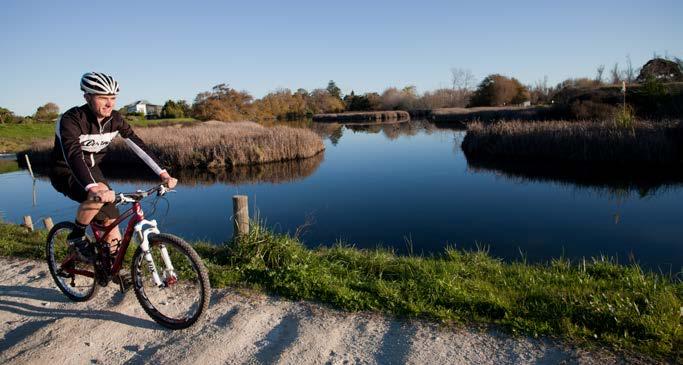
The plans can also forge links between organisations.
The Mangarau Gardens Community Space in Anderson Park has brought together a number of groups and organisations. While they do have community aims in common, without the project they would probably not have ended up working so closely together. The Red Cross leases the land from the Office of Treaty Settlements, the community works in the garden and sources vegetables and flowers from it, the local primary school, kindergarten and kohanga reo use the space for education and play, and a church runs a weekly sausage sizzle in it.
Can a community make a plan without Council?

Of course it can, but we believe that more can be achieved by working together, using all of our connections (Council’s and a community’s) and sharing ideas.
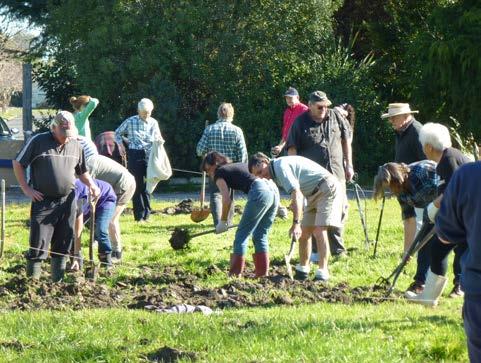
Hastings District Council // 3
Super successes
Here’s some successes that community-led plans in our area have achieved.
CAMBERLEY:

Building the Camberley Community Centre and the Kirkpatrick Park Cycle Track; initiating groups including Youth Leadership; putting on events including a Senior Citizens Dinner, CAFE and Christmas in the Park; instigating improvements to street lighting and bus stop shelters; facilitating murals in public areas; introducing numeracy and literacy programmes.
ANDERSON PARK:
Compiling welcome bags for new neighbours; putting together a Community Tool Box with lawnmower and other tools that residents can borrow; organising events including “4 Friends” sports for children and Matariki celebrations; a weekly sausage sizzle; building a community garden with picnic tables and play areas; instigating improvements to street lighting and tree plantings; facilitating public murals.
CLIVE:
Building the new Evers-Swindell Park playground; the installation of welcome, history and who’s who signs; encouraging businesses to re-introduce services including NZ Post, a takeaway coffee retailer and a bank; encouraging local and central Government organisations to improve services including bus services (regional council) and a bridge cycle lane (NZTA); instigating improvements to school accesses; encouraging an increase in the number of Neighbourhood Support Groups.
WHAKATU:
Events including Whakatu Christmas in the Park; upgrading playground equipment at Ngaruroro Reserve; building new bus shelters; successfully advocating for the rezoning of industrial land to commercial; planting of the Ngaruroro River corridor; successfully lobbying Te Puni Kokiri for funds for a project which will see positive results for the community.
FLAXMERE:

Establishing the Flaxmere Planning Committee; instigating the Flaxmere Drivers Licensing Programme (now funded by a central Government agency in the wake of its initial success); setting up the Kai Collective to provide food to people in need; upgrading of Flaxmere Park playground; setting up Flaxmere Community Patrols; supporting Flaxmere College to set up a Polo Club; events including Matariki, Baysifica, the Flaxmere Challenge, and kia o rahi tournaments; initiating a street clean up (which collected 500 tons of rubbish).
WAIMARAMA:
Successful lobbying to have the Waingangoro Stream restored to its original path; completion of a water supply strategy; building of a recycling facility; establishment of Neighbourhood Support groups.
CAPE COAST:
Running beach clean-up days and planting days; holding a marae open day; supporting community events including bonfire night; successfully lobbying for Black Bridge improvements and a new toilet facility at Clifton Rd Reserve; instigating a School Safety Plan (in progress).
4 // Hastings District Council
What is the community’s commitment?
There is no right or wrong way to prepare a community plan. All of the ones already formed come in a huge variety of styles, have different structures in place for setting them out and then looking after them, and various ways of measuring success – it is up to the community concerned.


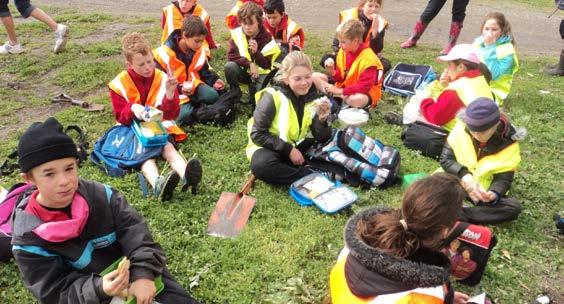
For the plan to be a success, the over-arching aim should be to get as many voices as possible to offer their opinions on what is needed. There is nothing worse than coming up with a bunch of great ideas, then finding the majority of your community thinks the important things are something else entirely.
The time taken to prepare a plan, or even decide whether your community wants or needs one, can also vary by quite a lot. And that’s before you decide on a structure to make it happen. One of our communities took three years to decide it was the right process for them, but that ground work meant that when they did prepare a plan the base was solid and the ideas and aims already more than half formed. Often, the beginning process starts with a few dedicated people, who take it on themselves to draw in the rest of the community. It’s often the already busiest people in the community – but as they say ‘if you want something done, ask a busy person’. The experience has been that once people see the vision, they get involved.
A classic case is the ‘toolbox’ in Anderson Park. It is a trailer full of tools and a lawnmower. Residents can borrow it to do work around their section using gear they may not be able to afford, or can’t justify because they will only use it a couple of times. That has been a huge drawcard that is very visible to the community, and a very practical way of providing assistance to those who need it. It also means making connections with others in the community – if you want to borrow it you are going to have to call people to arrange it, then go and pick it up: It’s a win/win on all sorts of levels. As a guide, communities tend to start with the following process: Identify the beginnings of a committee ensuring there are locals and representatives from different sectors; agree some of the social, cultural, economic, environmental, historic and demographic elements of the neighbourhood; start to identify what the hopes and goals of residents might be; consult with the community to ensure the people are behind the plan; work out how the goals might be achieved; work out an action plan with a tick list. Be ready for some hard work and a celebration as each goal is achieved.

Hastings District Council // 5
What is Council’s commitment?
Council will help. The community plan initiative is about making plans with communities rather than for them, but that does not mean not helping at all. In fact, there are a number of ways Council can help.
Each community that wants to prepare a plan works with a staff member from Council’s Social and Youth Development team. That team member can talk to an interested group on how best to get the message out to the community that a plan is being considered, and to encourage feedback.
They can talk you through the style and content of other plans already formulated in the district. One of those could be an inspiration for your team, and after all there is little point in reinventing the wheel. Some are one-pagers, another takes the form of a calendar residents can hang on the wall at home, another is more like a corporate document. The main thing they share in common is a set of goals the community wants to achieve.
Council staff can also help communities find their way around Council processes; things like Annual Plans and Long Term Plans. Often objectives within a community plan will fit with Council’s overall plan for the district. By signalling projects by formally submitting to Council’s plans, there may well be practical or financial help through those channels.
Other ways Council can help is to link in or provide contacts to outside organisations that might need to help to achieve particular goals. In Clive the community was lobbying for cycle lanes on the Clive Bridge, which meant NZTA had to be contacted and be involved.
The cycleway through Whakatu, while initially unrelated to the community plan, has had a huge impact on the community’s ability to access the Ngaruroro River, both for recreation and to undergo restorative planting. Connections between the community and the cycleway’s organiser have meant good communications that have led to great outcomes for both parties.
External groups and organisations who potentially can help achieve the goals in a plan can include: HNZ, Police, NZ Fire Service, local schools, kohanga reo, Red Cross, churches, Te Puni Kokiri, Hawke’s Bay District Health Board, Civil Defence, Hawke’s Bay Regional Council and NZTA.
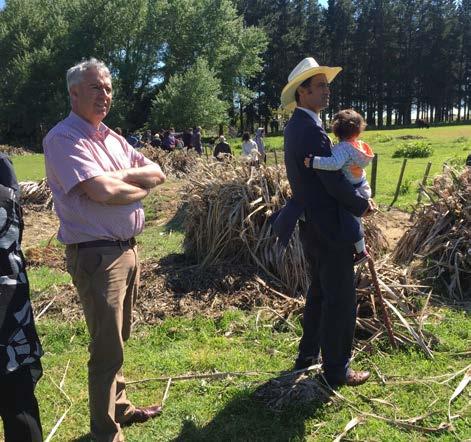
A particular example is the investment that schools have made in the plans, particularly in the Anderson Park and Camberley areas. Both schools see value in having their children fully involved in initiatives like community gardens and cycle ways. As well as the physical outdoors opportunities, joining in encourages children to take a full part in their communities and understand that they can make a difference. The potential is that they grow into adulthood participating fully in decisions that affect their suburb and district.
On another level, connecting Whakatu with Central Government agency Te Puni Kokiri (TPK) led to financial support to develop a new plan. The community was able to apply for funding from TPK using the existing plan to prepare an over-arching social wellbeing plan using Whanau Ora funds for its people.
Another example is the community centre built in Camberley. The robustness of its community plan gave funders, including the Lottery Grants Board, Eastern & Central Community Trust, and Council, the confidence to inject funding into the project.
6 // Hastings District Council
Community plans so far
A community is an area of interest and there are no set geographical lines or population numbers. As at 2016 there are nine communities with plans in various stages, after starting with one, in Camberley, in 2004. The plan with the smallest population is Whakatu, with less than 1000 residents; the largest is Flaxmere, with nearly 10,000. Every community, regardless of affluence, has particular challenges and aims that may be helped with a community plan.



Community Population Clive 1827 Whakatu 948 Cape Coast 2271 Maraekakaho 1296 Waimarama 1092 Raureka 4296 Mayfair 4266 Camberley 2151 Flaxmere 9261 Anderson Park 1545 Hastings District Council // 7
How did all this come about - the history

Hastings District Council has been on the path of community-led planning for nearly 14 years, taking its first baby steps alongside the community of Camberley in 2004.


The concept came out of desire to respond to the particular needs and special characters of communities – something not always easy to do in a traditional council process.
Traditional planning techniques typically focused on numbers in a community, its geography and Council perceptions of how it should work within the context of the wider district. That, however, made it difficult to account for the different “personalities” of different areas.
The adoption of ‘place-based planning’ means that at the start of any process involving an area, there needs to be work done on identifying what it is that makes it special. The only way to do that is to talk to the people who live in it, work in it, and visit it.
The second step is to ensure it is the community that sets out the vision and the goals, and that its people are helped to gain the tools to make sure they can achieve those goals, whether that be through Council processes, with outside agency help or within-community effort.
The change in philosophy has meant a change in actions. By its nature, community-led planning has to be an approach rather than a process. That means communities set the pace, the goals and the measurement tools–not something that can be written down as a set process for all communities to follow.
In the end, the desire is for good quality spaces enjoyed by a community of people who are confident in making decisions about their neighbourhood. It is about enhancing participation, enjoyment, responsibility and connectedness. It is the community that experiences and represents a place. Where the people in a place are able to do things on their own behalf they should be helped to do so, recognising their skills, capabilities and ownership of their community.
8 // Hastings District Council
In a nutshell:

Place based planning (including community-led plans) is a process by which: What is important to people and the community about a place is identified by the community, resulting in goals and aspirations which are planned and provided for across the whole of Council’s activities and inform the work of other stakeholders so that in an integrated and collaborative way the community is enabled to achieve them.

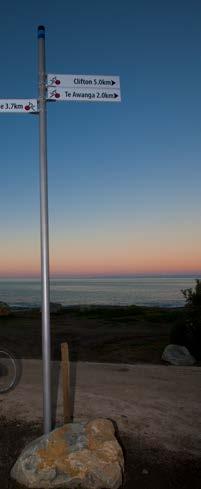

Hastings District Council // 9
HASTINGS DISTRICT COUNCIL
207 Lyndon Road East
Hastings 4122
Private Bag 9002
Hastings 4156
www.hastingsdc.govt.nz
www.myvoicemychoice.co.nz
TE KAUNIHERA O HERETAUNGA























